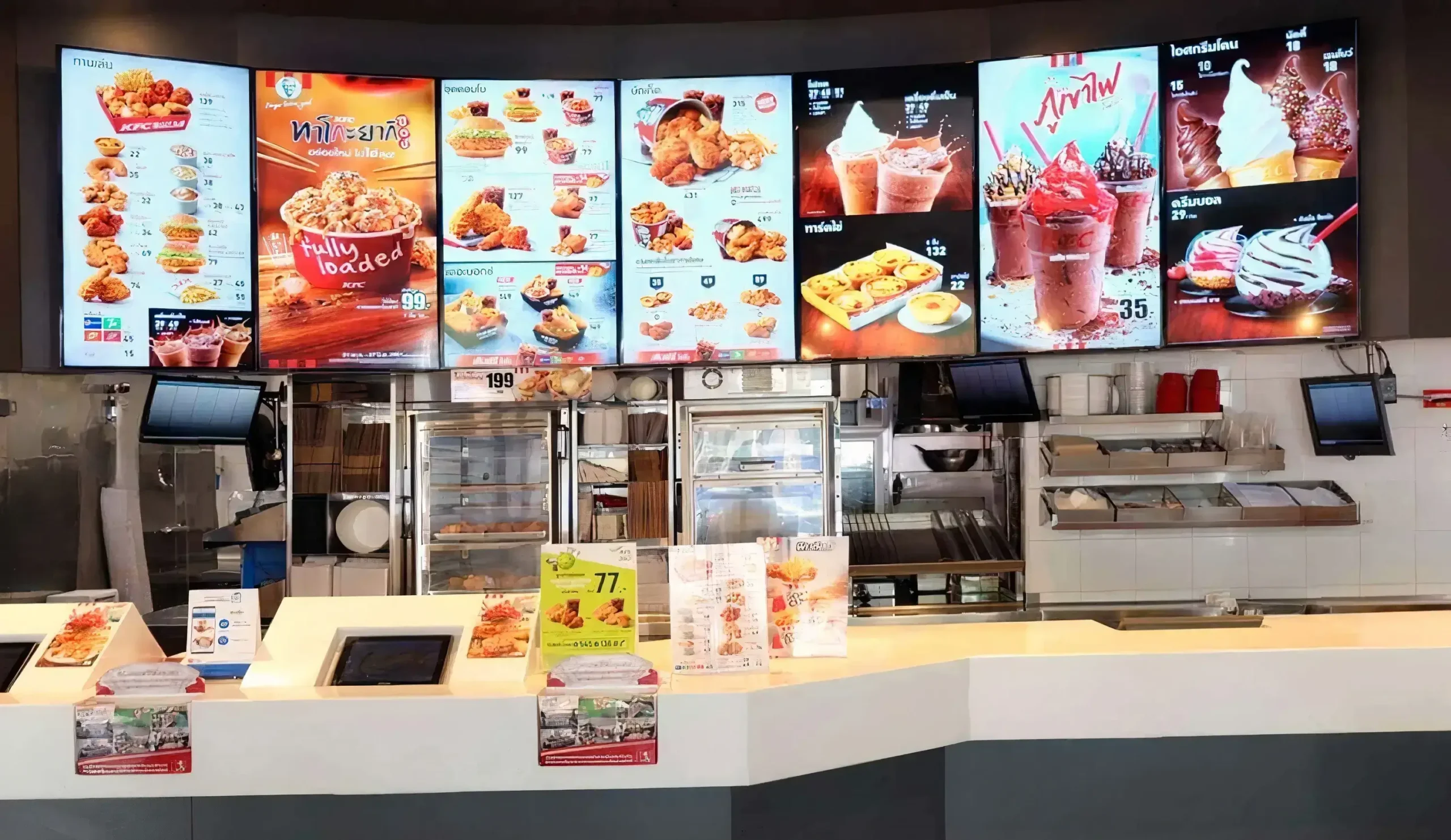In the ever-evolving landscape of the restaurant industry, staying competitive requires not only providing exceptional cuisine but also offering an engaging and informative dining experience. One innovative solution that has been gaining momentum in recent years is the implementation of Restaurant Digital Menu Boards.
These dynamic displays are revolutionizing the way restaurants communicate with their patrons, offering a multitude of benefits ranging from enhanced food transparency to increased customer trust. In this article, we delve into the significance of digital menu boards, exploring how they contribute to a more informed and trusting dining environment.
Restaurant Digital Menu Boards:
Digital menu boards are electronic displays that replace traditional static menu boards. These boards utilize LCD, LED, or projection technology to showcase menu items, prices, and promotions in a visually appealing and interactive manner. Unlike their static counterparts, digital menu boards allow for real-time updates, enabling restaurants to effortlessly modify offerings, prices, and promotions as needed.
Improving Food Transparency:
One of the primary benefits of digital menu boards is their ability to enhance food transparency. By providing detailed information about menu items such as ingredients, sourcing, and nutritional content, restaurants can empower customers to make more informed dining choices.
For individuals with dietary restrictions or preferences, this level of transparency can be particularly valuable, fostering trust and loyalty.
Dynamic Content and Customization:
Digital menu boards offer unparalleled flexibility in terms of content and design. Restaurants can showcase high-resolution images of their dishes, enticing customers with vibrant visuals. Moreover, they can easily incorporate dynamic elements such as videos, animations, and real-time social media feeds to create an immersive dining experience.
This level of customization allows restaurants to tailor their messaging to specific demographics or promotions, maximizing engagement and sales.
Streamlined Menu Management:
Traditional menu updates can be time-consuming and costly, often requiring the printing and distribution of new materials. With digital menu boards, these challenges are virtually eliminated. Restaurant owners and managers can remotely update menu items, prices, and descriptions across multiple locations with just a few clicks, ensuring consistency and accuracy.
This streamlined approach not only saves time and resources but also minimizes the risk of errors.
Enhancing Customer Experience:
In today’s digital age, consumers expect seamless and interactive experiences across all touchpoints. Digital menu boards contribute to a more engaging dining experience by providing dynamic content, interactive features, and personalized recommendations. Customers can easily navigate menus, explore additional information about dishes, and even place orders directly from the display.
This level of convenience and interactivity not only enhances customer satisfaction but also encourages repeat business.
Promoting Sustainability:
The environmental impact of traditional printed menus cannot be overlooked. Each update requires paper, ink, and energy for printing, contributing to waste and pollution. Digital menu boards offer a sustainable alternative by eliminating the need for printed materials altogether.
By transitioning to digital displays, restaurants can reduce their carbon footprint and demonstrate their commitment to environmental stewardship, resonating with eco-conscious consumers.
Building Trust and Brand Loyalty:
Transparency breeds trust, and digital menu boards play a crucial role in building credibility with customers. By providing comprehensive information about their offerings, including sourcing practices, nutritional information, and allergen warnings, restaurants demonstrate their commitment to honesty and integrity.
This transparency fosters a sense of trust and loyalty among patrons, encouraging them to return and recommend the establishment to others.
digital menu boards represent a powerful tool for enhancing food transparency and customer trust in the restaurant industry. By leveraging dynamic displays, real-time updates, and interactive features, restaurants can provide an engaging and informative dining experience that resonates with today’s discerning consumers.
From improving food transparency to streamlining menu management, the benefits of digital menu boards are clear. In a rapidly evolving landscape, restaurants must adopt digital innovations to stay competitive and deliver exceptional patron experiences.





